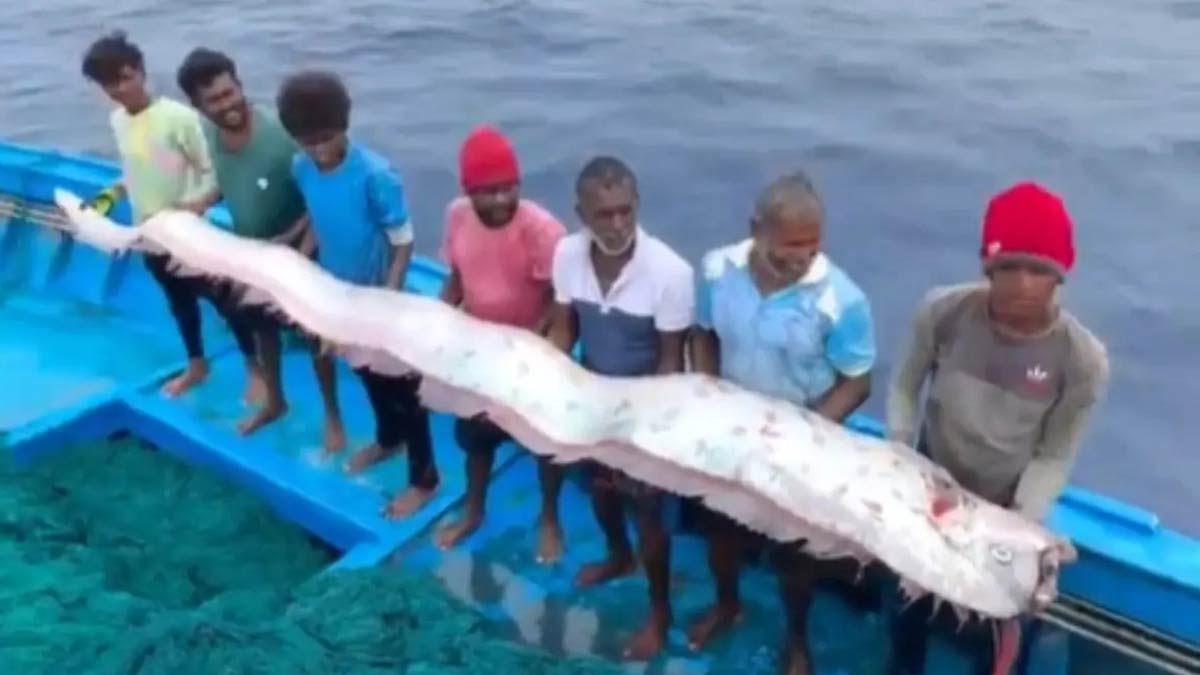‘Doomsday fish’ sightings: A warning sign of an upcoming disaster?
 Tamil Nadu fishermen holding a nine-metre-long oarfish | X
Tamil Nadu fishermen holding a nine-metre-long oarfish | X
The oarfish, popularly known as the ‘doomsday fish’, has been making a lot of appearances in recent times, raising fear and concerns among people who believe they might be hinting at an upcoming disaster.
Recently, a photograph of seven Tamil Nadu fishermen holding a nine-metre-long (30 feet) oarfish went viral on social platforms, leaving many of the netizens fretting.
It is often believed that sea creatures and wild animals can predict danger before humans. Animals’ senses are stronger, and they can hear the tiniest vibrations that humans cannot. This theory is being significantly brought into the case of ‘doomsday fish’.
The oarfish has made at least four appearances in the past few weeks in different parts of the world. On June 2, 2025, a three-metre-long (9 feet) oarfish was washed ashore on an Australian beach. Two oarfishes were found later in New Zealand.
People on the internet have started speculating, and theories of superstition are now flying thick and fast.
According to Japanese folklore, the Oarfish is known as the "Messenger from the Sea God's Palace" and can predict seismic activities. Oarfish is an elongated, ribbon-like fish that can grow up to eight metres and is found deep in the ocean. It is a slow-moving and lazy fish with very little muscle. It usually just floats gently in the water, often in a vertical position, and feeds on plankton. It is very rarely found at the surface, except when they are sick, injured or breeding.
The scientists have still not confirmed any relation of the fish to the natural disasters. They suggest that the change in temperature or water currents may be the reason for their sightings at the surface.
Past sightings of the ‘doomsday fish’
In 2011, several oarfishes were found washed ashore before the Tohoku earthquake on March 11, 2011. The 9.1 magnitude quake was followed by a massive tsunami. This was referred to as the Great East Japan Earthquake and Tsunami, killing over 18,000 people.
In 2017, the Surigao earthquake with a magnitude of 6.7 occurred months after two oarfishes were found by the fishermen near the shore. Several people were killed while over 200 were injured in this calamity.
Similarly, in July 2023, an oarfish was spotted by a few divers in Taiwan, and days later, an earthquake of magnitude 7.2 occurred. According to Reuters, this was Taiwan’s biggest earthquake in at least 25 years, killing nine people and injuring over 900 people.
These are the few cases that have been recorded about the theory behind the ‘doomsday fish’. However, such theories don’t have the backing of any scientific evidence.
Society